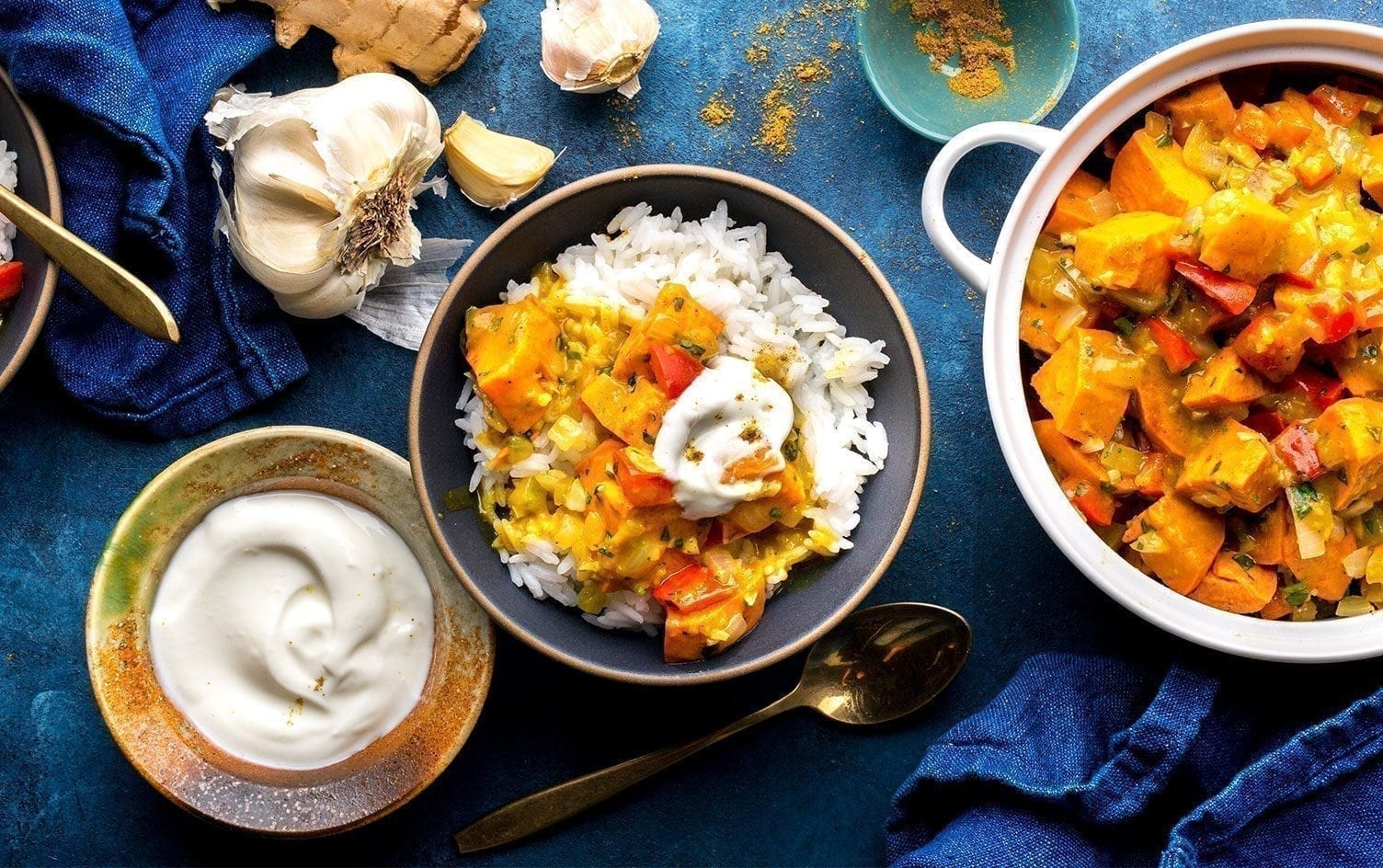Slow-cooker meals can be a busy cook’s best friend but they often yield lackluster results. But, by spending a few extra minutes at the beginning or end of the cooking process, you can create a recipe that’s crave-worthy instead of one that tastes like it’s missing something. Knowing how to properly slow-cook a recipe can mean the difference between a Slow-Cooker Turkey Chili everyone loves and a bland, mushy soup you end up tossing!
Here are seven ways to boost the flavor of your slow-cooker meals — without adding excess calories, fat or salt:


Onions, garlic, peppers, carrots and celery are rich in flavor, which is why most stovetop recipes start by sautéing them in a small amount of oil or broth. When they start to brown and caramelize, those cooked-on bits build flavor. This technique also allows excess moisture to evaporate, which concentrates flavor.
How to: If your slow cooker has a brown/sauté setting, use it to cook your aromatics before proceeding with your recipe. Otherwise, sauté the veggies on the stovetop and transfer them to the slow cooker.
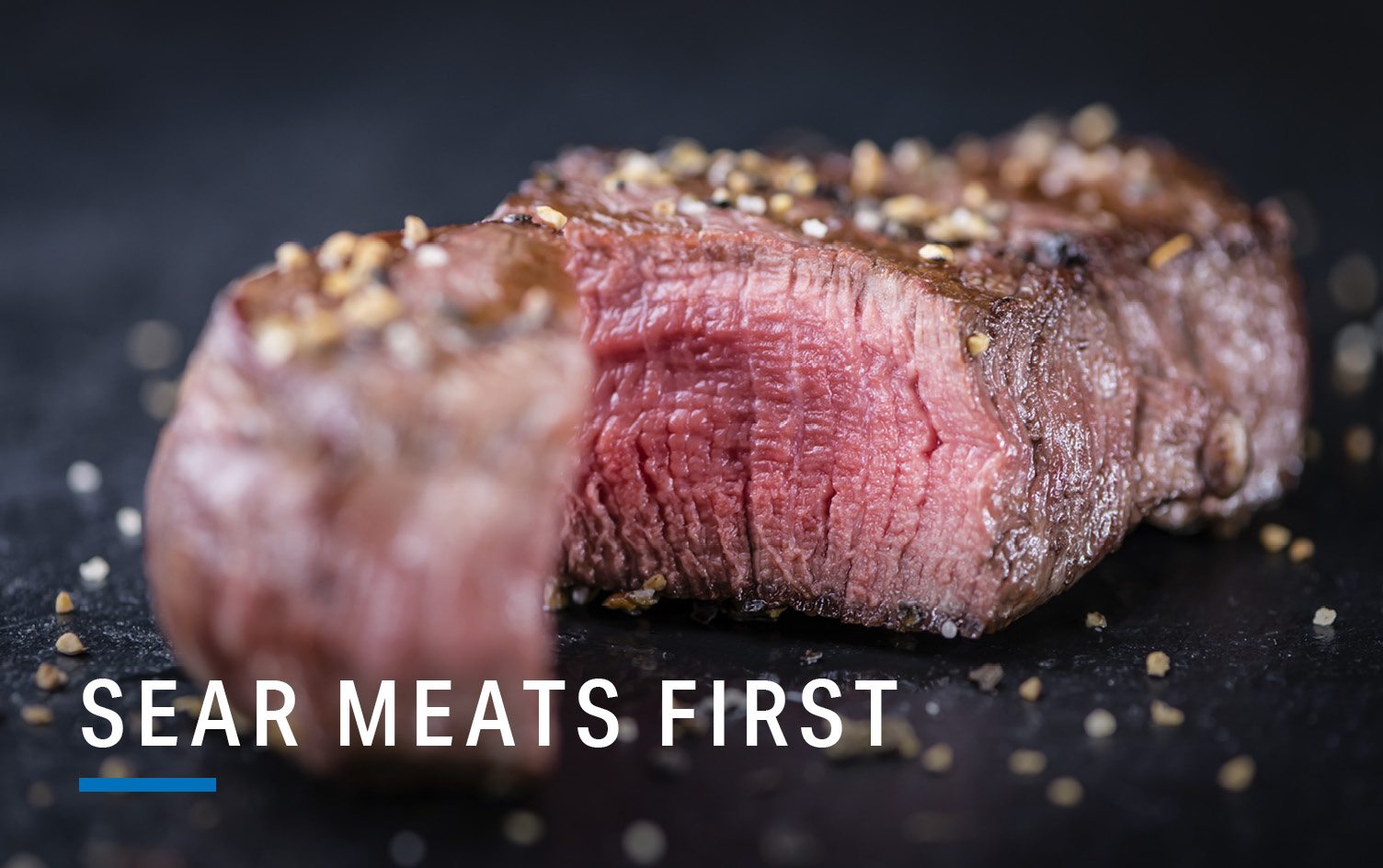
Slow cookers can turn lean proteins or large cuts of meat into succulent dishes. If your meat tastes bland or rubbery, start by searing it to create a brown crust on the outside. This adds flavor and locks in moisture, which is important for leaner cuts.
How to: Use the brown/sauté setting (or a skillet on the stovetop) to sear the meat on all sides. Cook for a minute or so per side over medium-high heat, allowing a dark brown crust to form. Then, proceed with your recipe.
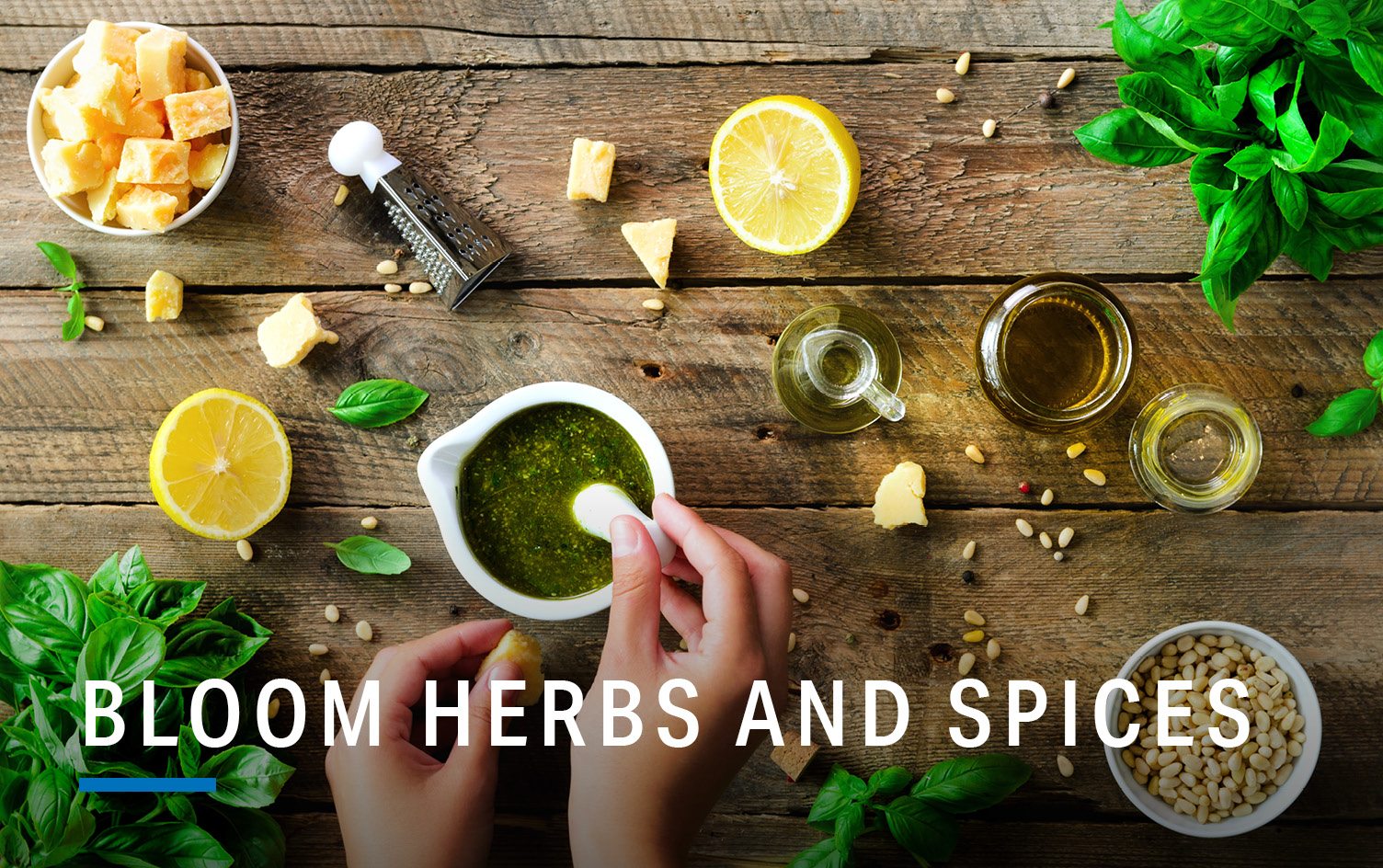
Dried herbs and spices are the best way to add flavor without calories, but you have to know how to unlock their potency. Simply sprinkling them on top of a liquid-filled pot doesn’t maximize their potential. Instead, rub herbs between your hands and crush spices to release their volatile oils, before adding them to the pot, then cook them in a small amount of oil to unlock their full flavor.
How to: Add herbs and spices during your final minute of cooking the aromatic vegetables, just until fragrant, then add to your slow cooker.

When a recipe calls for a tender grain or vegetable that is easy to overcook (Think: pasta, spinach, peas, etc.), add it just before serving. This prevents soggy pasta, slimy greens and mushy peas from ruining your dish.
How to: Instead of adding pasta to your slow cooker, prepare it separately to keep it al dente. (Only add pasta to the servings you plan to eat that day; store the rest separately or it will break down.) Stir in greens just before serving and add frozen corn or peas about 15–20 minutes before you’re ready to eat.
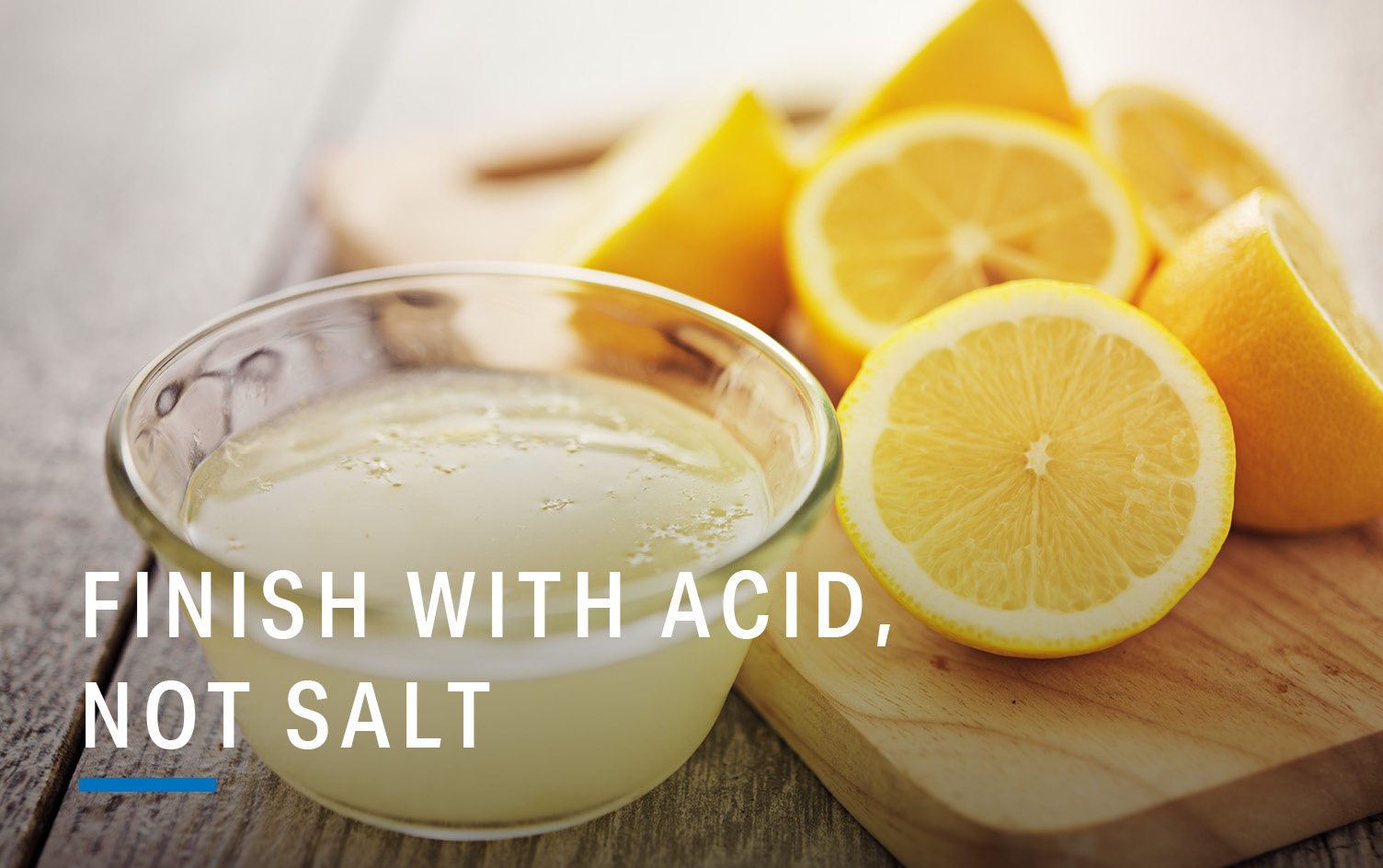
When you taste your finished dish, how do you adjust the seasoning? Do you instinctively reach for salt? Instead, keep sodium in check with this chef’s tip: A small amount of acid, like a good vinegar or citrus juice, will create the contrast your taste buds crave.
How to: Add a tablespoon or so of balsamic, white wine or sherry vinegar (or lemon, lime or orange juice) to your finished dish. Add more if desired.
READ MORE > HOW THE INSTANT POT IS YOUR SECRET TO HEALTHY EATING
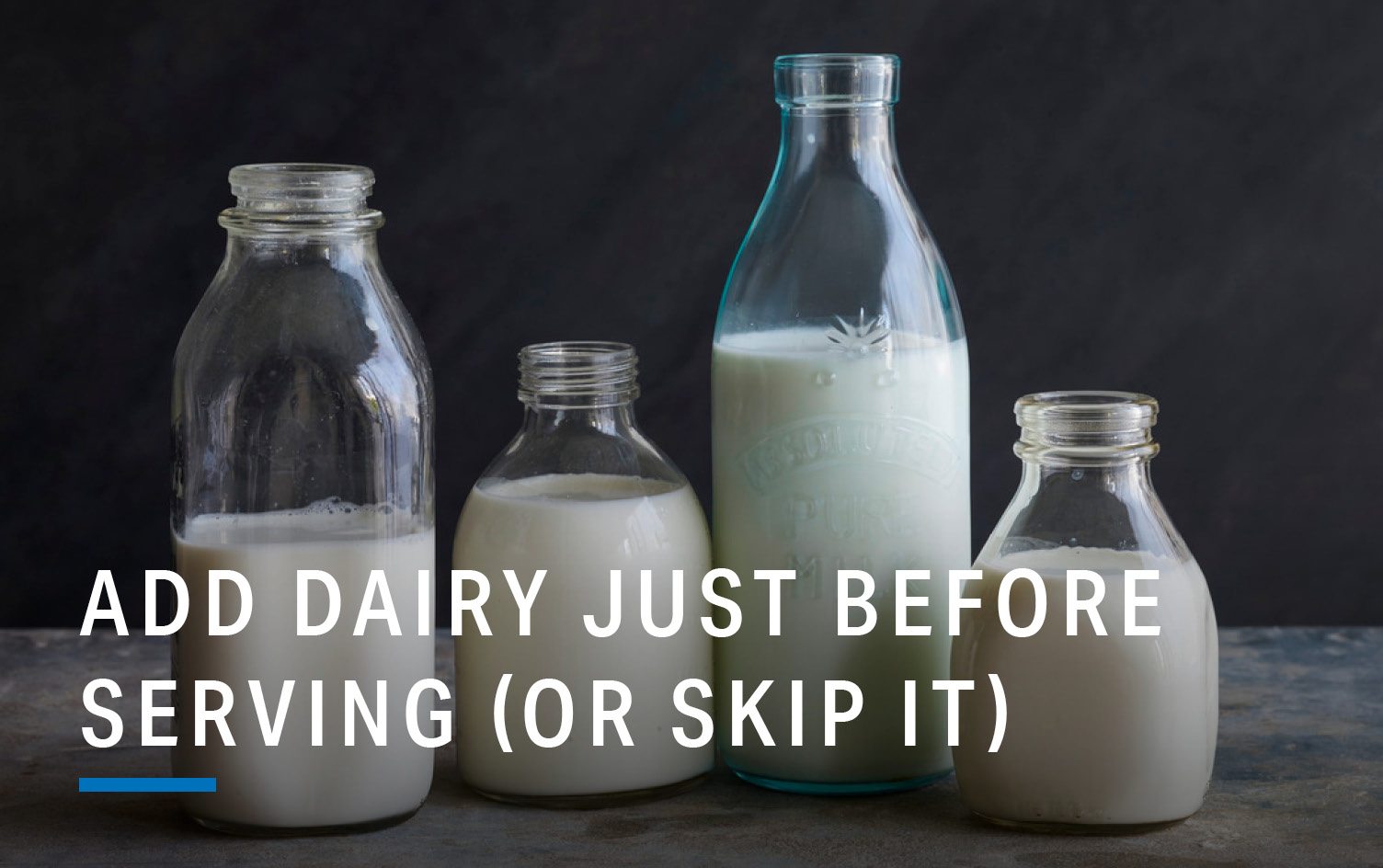
Overcooked milk will curdle and yield an unappetizing, grainy mess. To keep your broccoli-cheddar soup perfectly creamy, add the dairy components just before serving.
How to: Stir in cheese and milk toward the end of the cooking process so they don’t break down.
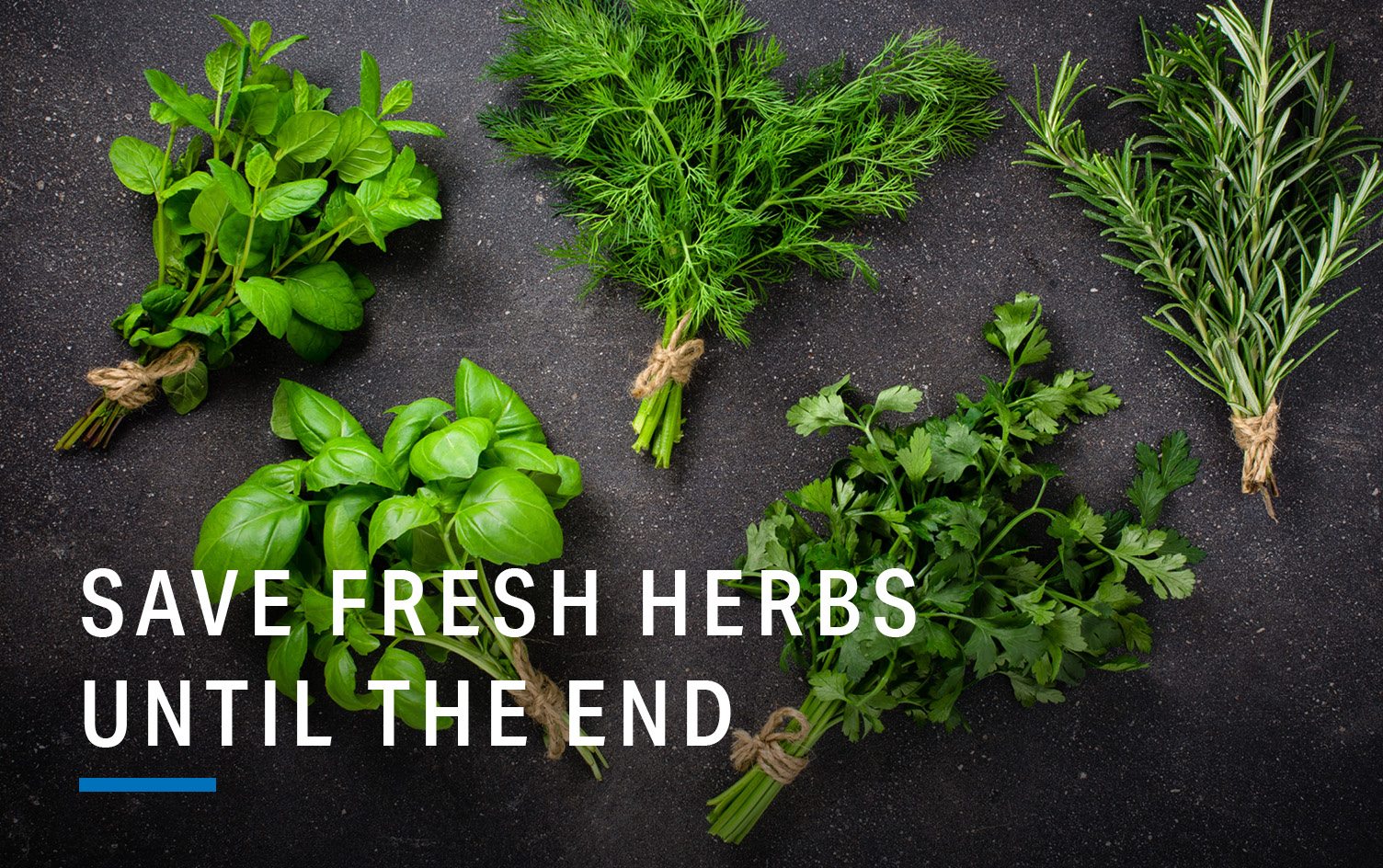
Fresh herbs offer a light contrast to heavy stews and soups, but when added directly to the pot, their delicate flavor disappears. Dried herbs love long cook times, but fresh ones do not. Adding fresh cilantro, basil or parsley should be one of the last steps in any recipe.
How to: Maximize the potential of fresh herbs by stirring them in just before serving or sprinkling on each portion.
